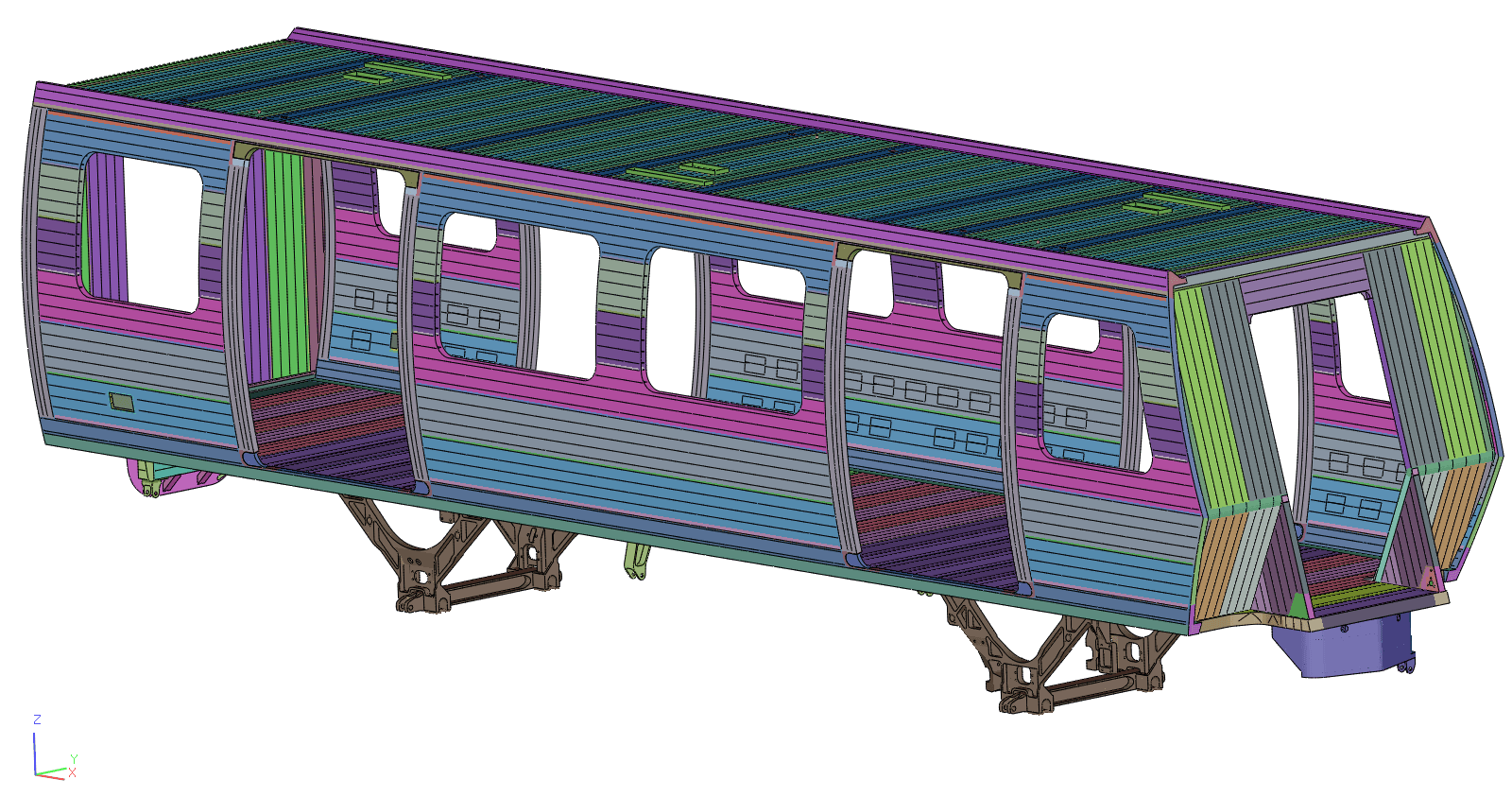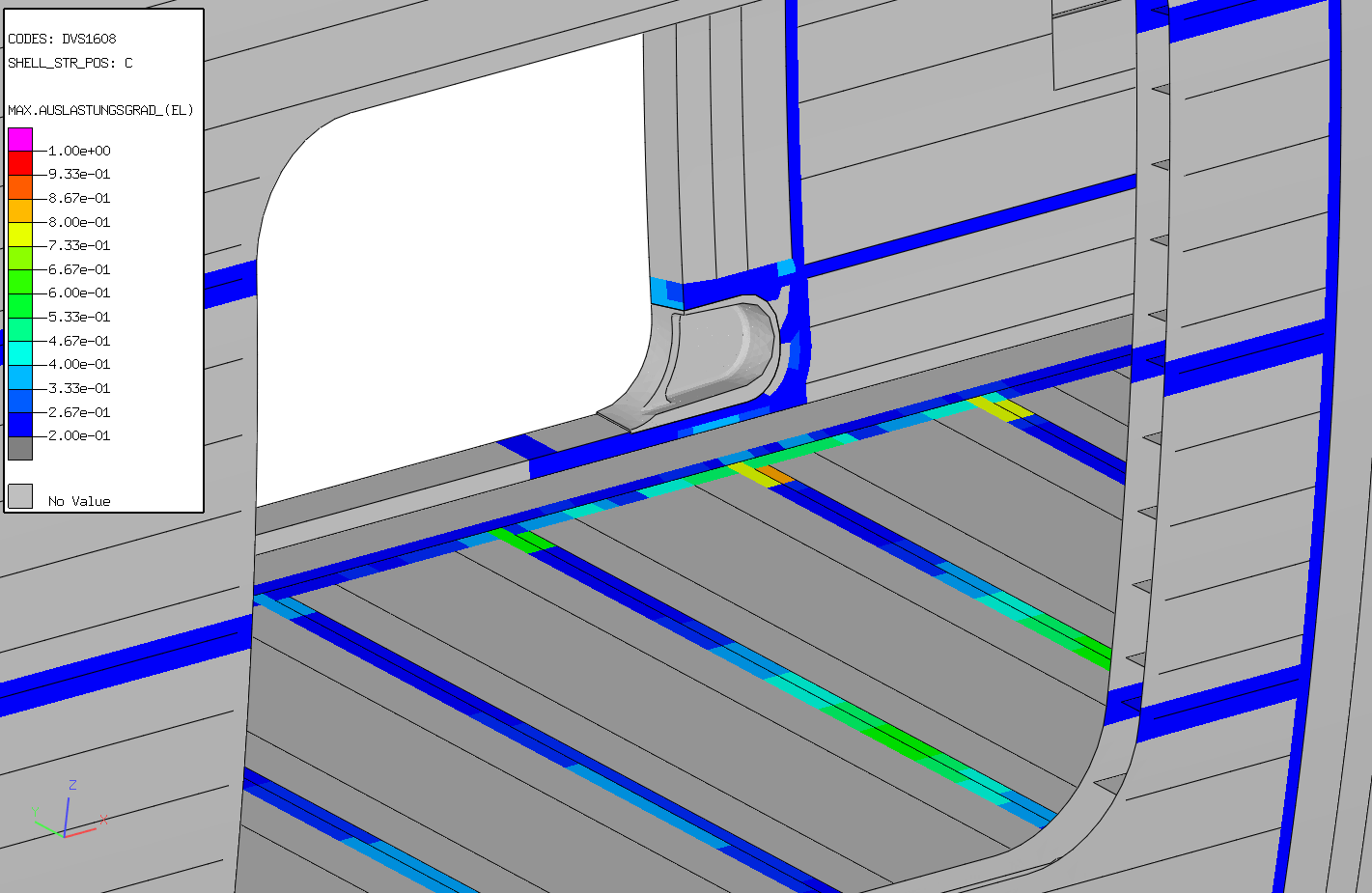Introduction:
In the following example the assessment steps of an aluminum car body are presented. The carbody consists mainly of large scale extrusions joined by full penetration welds. Fillet welds are also used in areas with rather low fatigue stresses.
Challenge:
The aim of the project was to efficiently perform a strength assessment of the whole car body. The main challenge in this design is to find the weld regions between the profiles and to apply appropriate weld settings to a very large number of welds, reducing manual definition of welds to a minimum.
The loading is described by 14 static and 19 fatigue load cases. The assessment has to be performed according to DVS 1608.

Advantages of using LIMIT:
- Importing the Finite Element model of one complete car
- Defining part sets in order to reduce individual weld definitions
- Defining all extrusions in the model
- Identifying all 500 welds
- Defining conservative settings for each topology such as welds between extrusions, T-joints or butt welds
- Applying the strength parameters to all welds
- Defining fatigue loads, job and report parameters in LIMIT
- Running the assessment
- Generating a report

